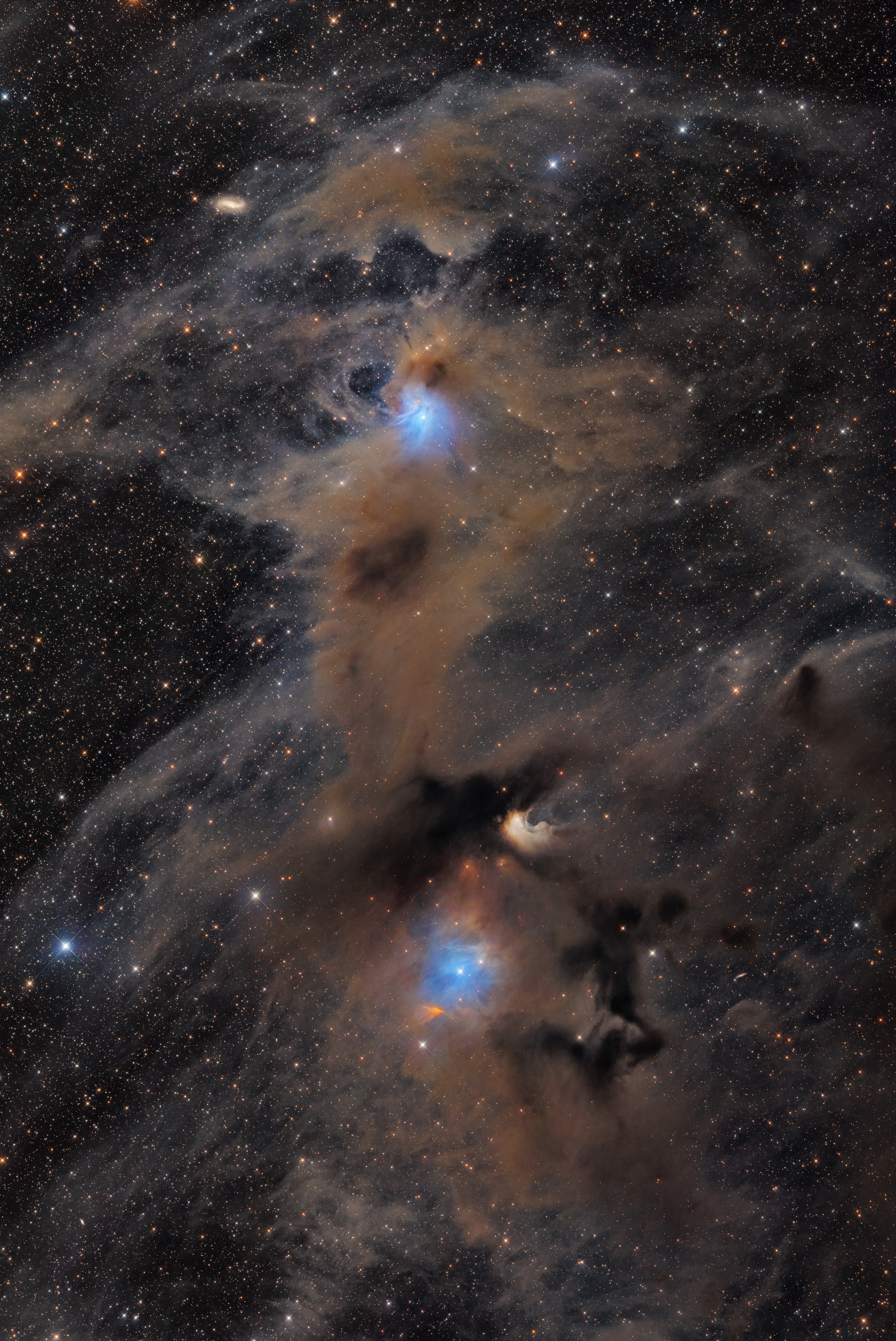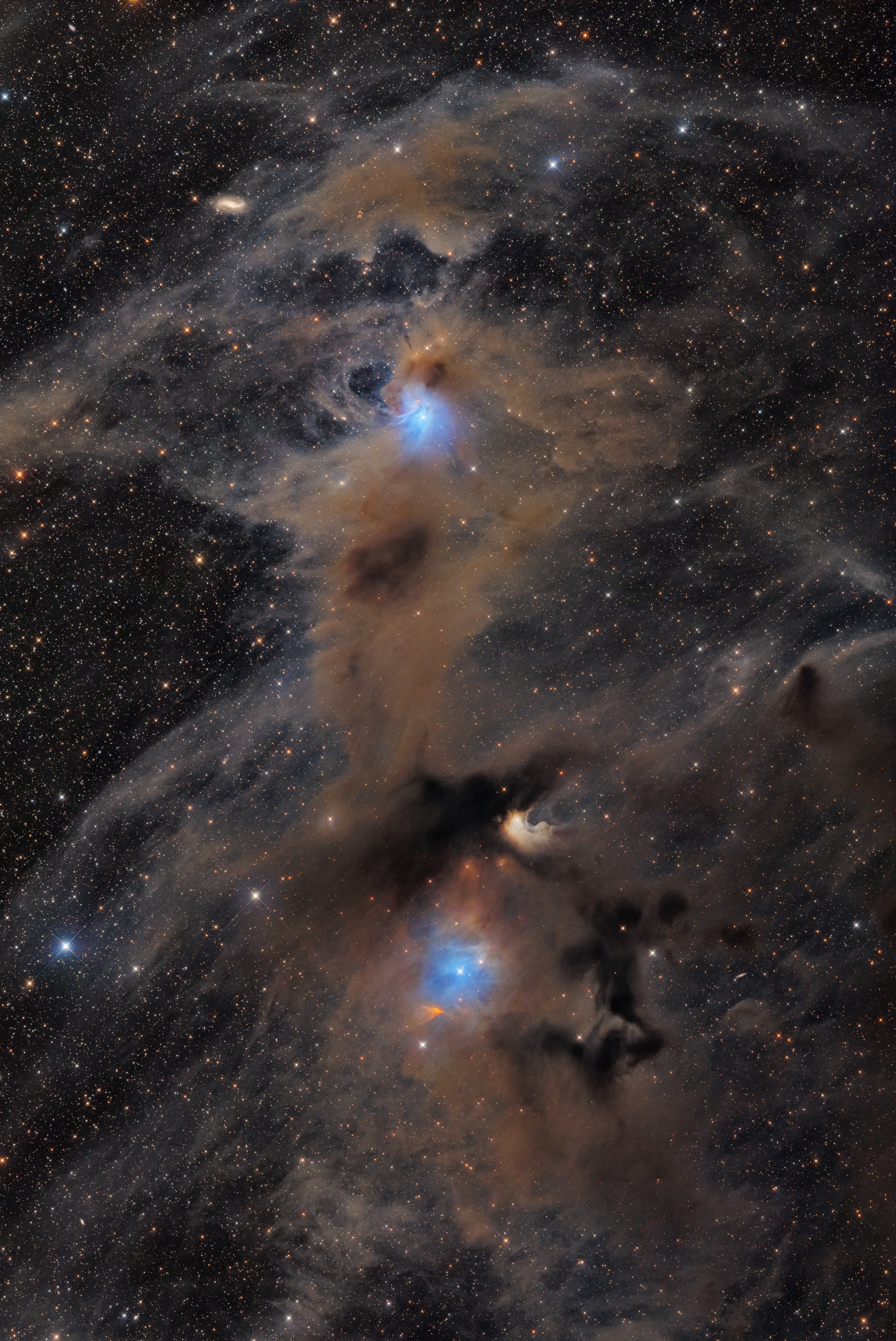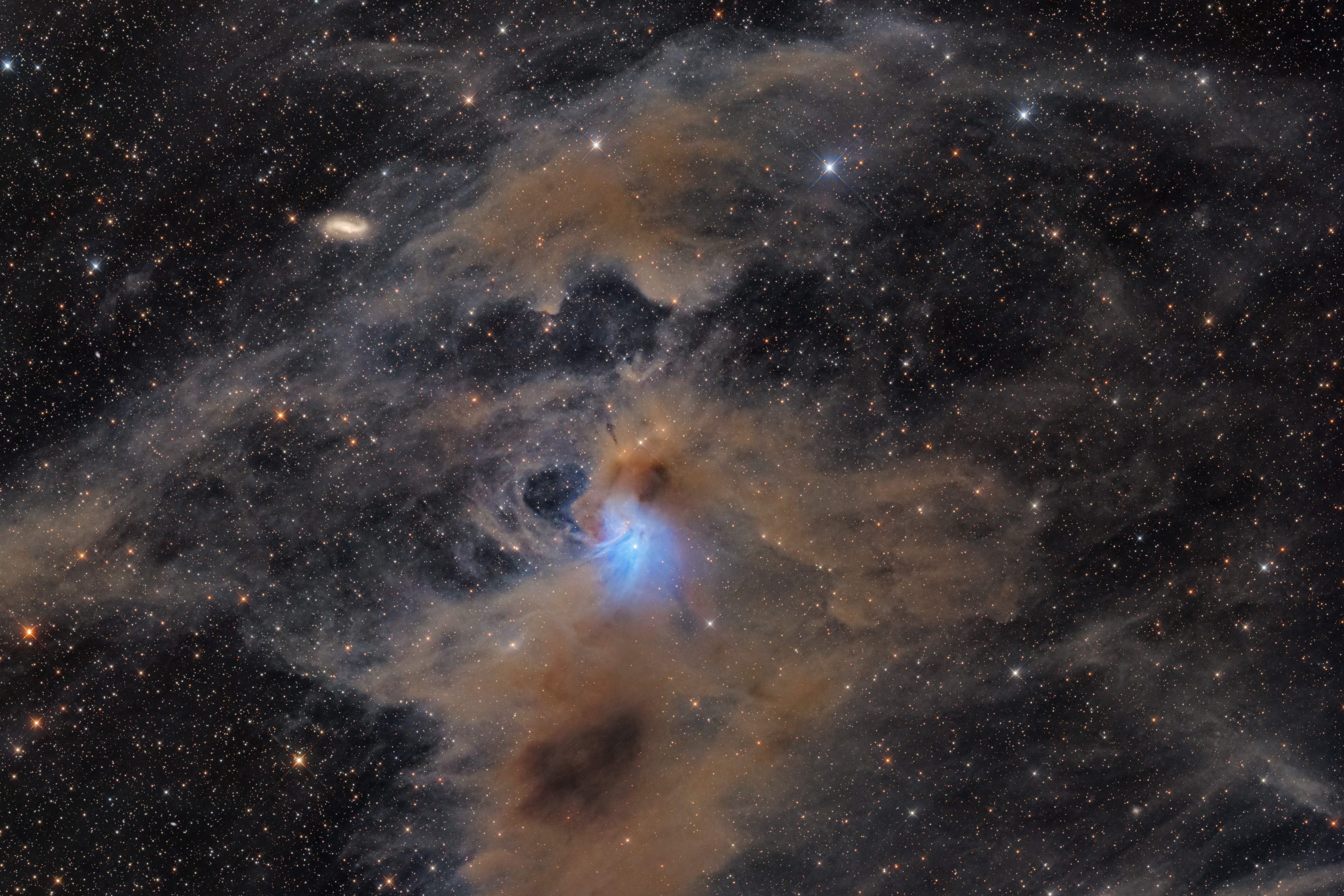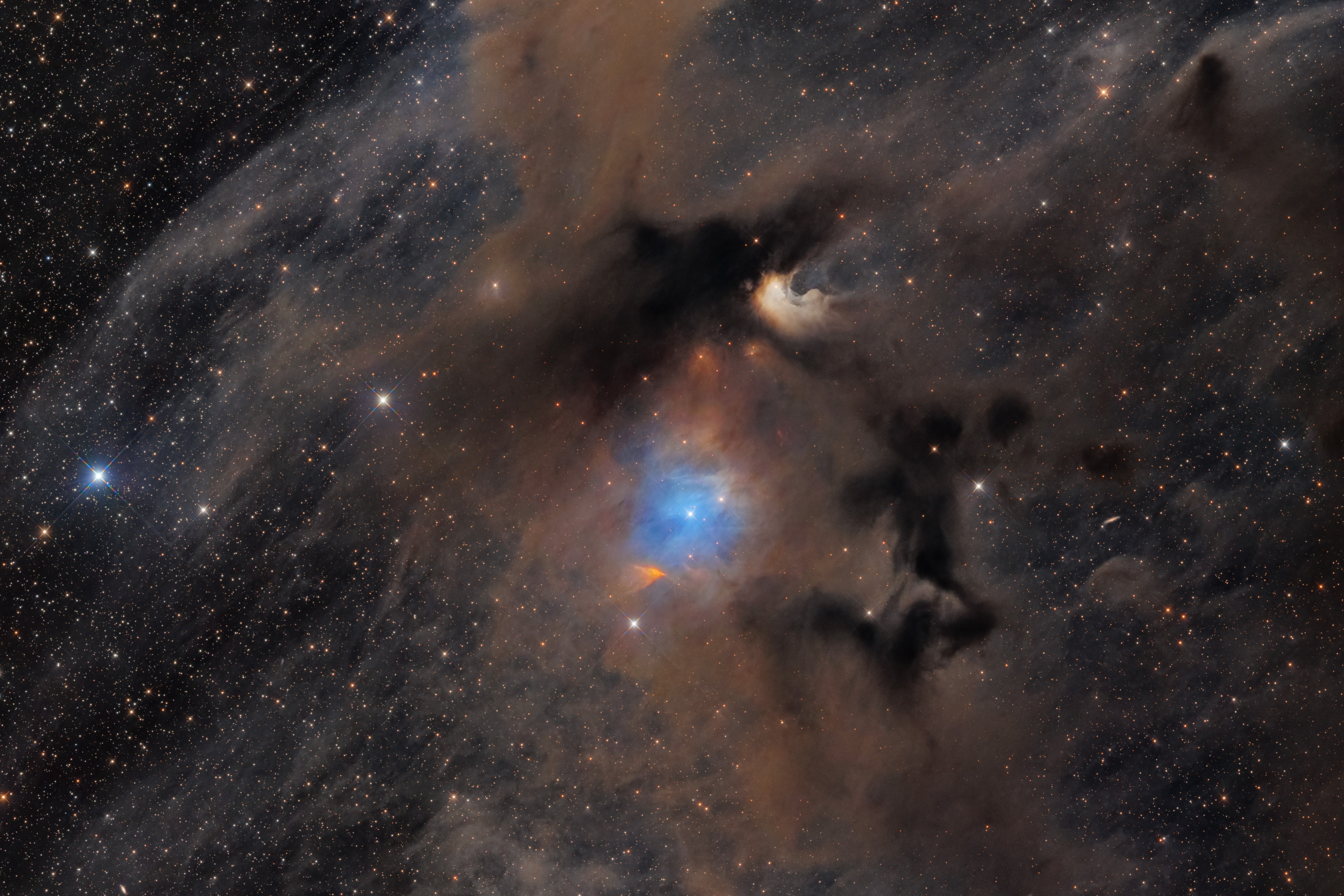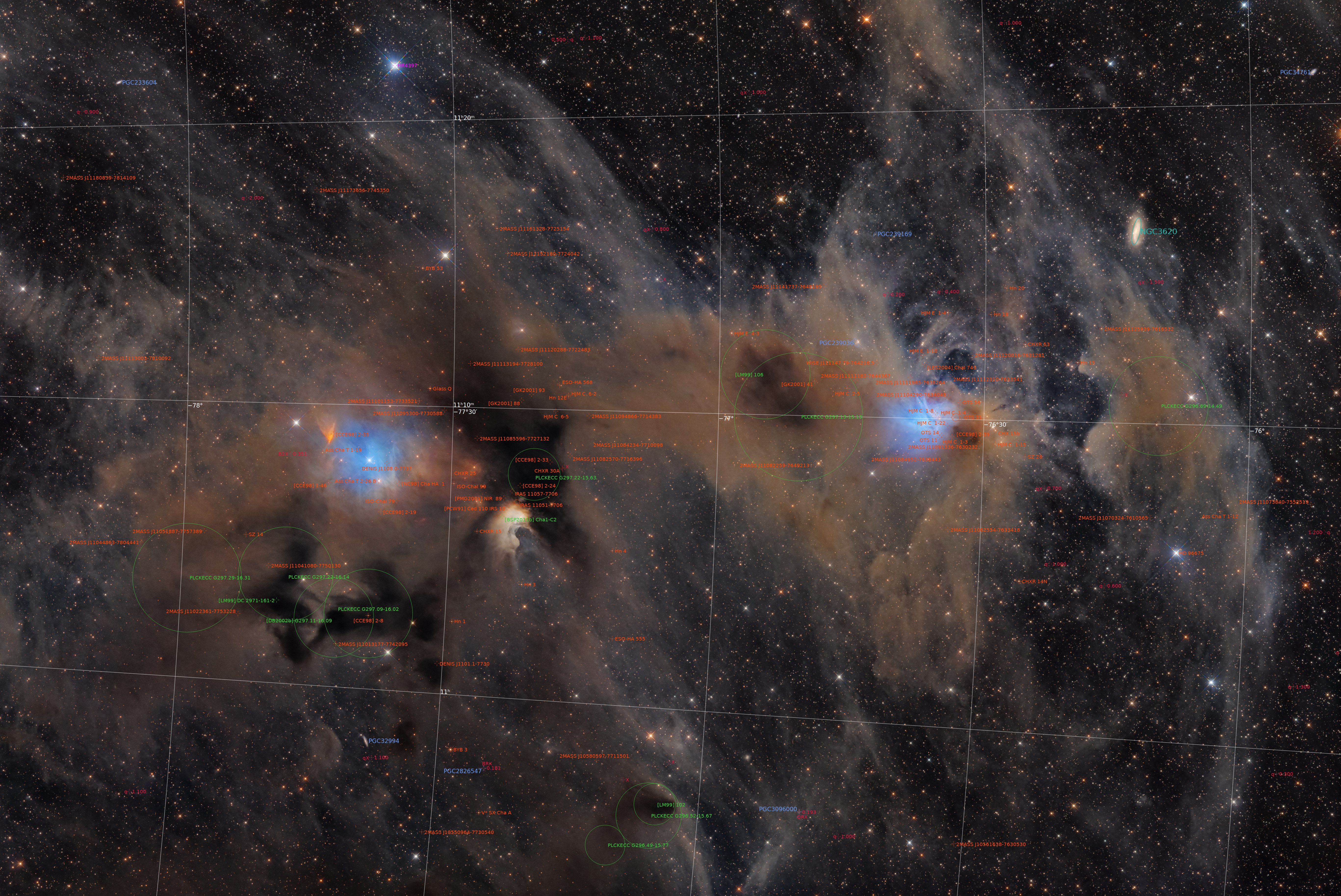
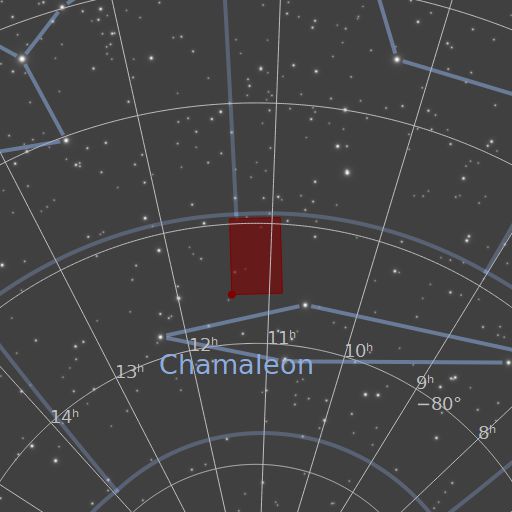
Bernes 142 - The Chameleon Molecular Cloud
The Chamaeleon Molecular Cloud Complex is one of the closest and most studied star-forming regions in the southern hemisphere, situated at an approximate distance of 400-600 light-years from Earth. This complex is located within the boundaries of the Chamaeleon constellation and encompasses three primary dark molecular clouds: Chamaeleon I, II, and III. These clouds collectively span an angular diameter of around 15 degrees, covering a substantial portion of the sky. Bernes 142 with its subregions IC 2631 and Cederblad 111 is one of the densest and most active parts.
Star formation needs very dense and cold environments to occur, the so called molecular cores (annotated in green) that have column densities of ~ 10^21 atoms per cubic centimeter. The Chamaeleon Molecular Cloud Complex is a prolific nursery for low-mass stars. The star formation process within this complex follows the classical sequence of gravitational collapse of dense molecular cores, leading to the formation of protostars and eventually Young Stellar Objects (annotated in orange). Observations across multiple wavelengths, from infrared to submillimeter, have identified numerous protostellar objects and disks around young stars, providing insights into the early stages of stellar evolution.
The Chamaeleon Molecular Cloud Complex serves as a crucial laboratory for studying the processes of low-mass star formation and the early stages of stellar evolution. Its proximity allows for high-resolution observations and detailed studies of the physical and chemical properties of the interstellar medium. Research on this complex enhances our understanding of the mechanisms driving star formation and the initial conditions leading to the birth of stars and planetary systems.
Photographed from Kiripotib Astrofarm, Namibia under Bortle 1 conditions.
-
Category
Dark/Reflection Nebula
-
Coordinates
RA 11h 09m 52s
DEC −76° 36′ 57″ -
Distance
520 ly
-
Apparent Mag
8 mag (V)
-
Equipment
Takahashi Epsilon e130D
Takahashi EM-200 Temma2
QHY 294m pro
-
Exposure
L: 35 x 300 s
R: 18 x 300 s
G: 18 x 300 s
B: 18 x 300 s
Total Integration: 7.4 h -
Publication Date
21.07.2024
